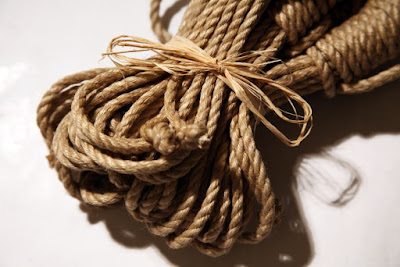Para saber mas sobre la obtención de fibras naturales y sus usos me acerqué uno de los primeros días de junio a conocer el trabajo que se realiza en la Espartería J. sánchez en Madrid. http://www.esparteria.com/
Tuve la oportunidad de que Juan me recibiera y me mostrara las fibras que tiene en venta y con las que trabaja para confeccionar desde cuerdas trenzadas de esparto hasta la restauración de sillas con esterillas de ratán.
VISIT ESPARTERÍA J. SÁNCHEZ
To know more about the
obtaining of natural fibers and their uses I approached one of the first
days of June to know the work that is done in the J. Sanchez Esparteria
in Madrid. Http://www.esparteria.com/
I had the opportunity of Juan to welcome me and show me the fibers he has for sale and with which he works to make from braided strings of esparto to the restoration of chairs with rattan mats.
I had the opportunity of Juan to welcome me and show me the fibers he has for sale and with which he works to make from braided strings of esparto to the restoration of chairs with rattan mats.
Lo primero que le pregunté a Juan es de dónde viene el material con el que trabaja, sabiendo de antemano que tradicionalmente el esparto, por ejemplo, se obtiene en la zona de Murcia; o el cáñamo en Aragón, pero actualmente muchas de las fibras las recibe del extranjero: la pita proviene de Sudamérica y África, el cáñamo de Egipto, el yute de Bangladesh, el ratán de Vietnam o Filipinas.
Los pedidos los recibe tanto de fibras como de trenzados de fibras, también el esparto que encarga puede ser crudo que es el que se seca directamente (primera imágen) o machacado el cual se deja fermentar en agua 2 - 3 semanas y se machaca con una herramienta de madera (segunda imágen).
The first thing I asked Juan is where the material he works with comes from, knowing in advance that traditionally esparto, for example, is obtained in the area of Murcia; Or hemp in Aragon, but now many of the fibers receive them from abroad: the pita comes from South America and Africa, hemp from Egypt, the jute from Bangladesh, the rattan from Vietnam or the Philippines.
The orders are received from both fibers and fiber strands, also the esparto that orders may be raw which is the one that is directly dried (first image) or crushed which is left to ferment in water for 2-3 weeks and crushed with a Wood mass (second image).
Otra de las preguntas fue cómo se reconocen y se direfencian las cuerdas de las distintas fibras. Las principales características tienen que ver con el tacto, su aspecto y su resistencia. La cuerda de pita es mas áspera al tacto y es mas resistente que las otras cuerdas (primera imágen, fuente: Espartería J. Sánchez), las de yute (segunda imágen, fuente: Espartería J. Sánchez) son mas suaves pero se obtiene una cuerda de peor resistencia, las cuerdas de esparto (tercera imágen, fuente: Espartería J. Sánchez) son las mas bastas y las de cáñamo (cuarta imágen, fuente: Espartería J. Sánchez) son suaves y resistentes.
Another question was how the strings of different fibers are recognized. The main characteristics have to do with the touch, its appearance and its resistance. The rope of pita is more rough to the touch and is more resistant than the other ropes (first image, source: Espartería J. Sánchez), the jute (second image, source: Espartería J. Sánchez) are smoother but you get a Rope of worst resistance, esparto ropes (third image, source: J. Sanchez Esparteria) are the most stubborn and the hemp (fourth image, source: Esparteria J. Sánchez) are soft and resistant.
Las cuerdas de cáñamo las solicitan actualmente para realizar las pruebas físicas para aspirantes a bomberos que requieren trepar por una cuerda de 6 m de largo. Con las cuerdas de cáñamo de 30 mm de diámetro se
pueden alcanzar hasta 2000/3000 kg de resistencia. Para poder hacer el nudo de atado de la cuerda, se utiliza una pieza metálica y un tejido que realiza Juan, ya que para una cuerda de ese grosor un nudo tradicional sería de grandes dimensiones.
Hemp ropes are currently being asked to perform physical tests for aspiring firefighters who need to climb a rope 6 m long. With hemp ropes 30 mm in diameter, up to 2000/3000 kg of resistance can be achieved. In
order to make the knot tying the rope, we use a metal piece and a
fabric made by Juan, because for a rope of that thickness a traditional
knot would be large.
Además se realizan trenzados con fibras de esparto para obtener cuerdas o cambiando las dimensiones de los trenzados y dándoles continuidad se producen botelleros y cortinas.
In addition
twisted fibers are made with esparto fibers to obtain strings or
changing the dimensions of the braids and giving continuity they produce
bottles and curtains.
Muchas gracias Juan por todas las explicaciones y por tu tiempo.Thank you very much Juan for all the explanations and for your time.
http://www.esparteria.com/















No hay comentarios:
Publicar un comentario